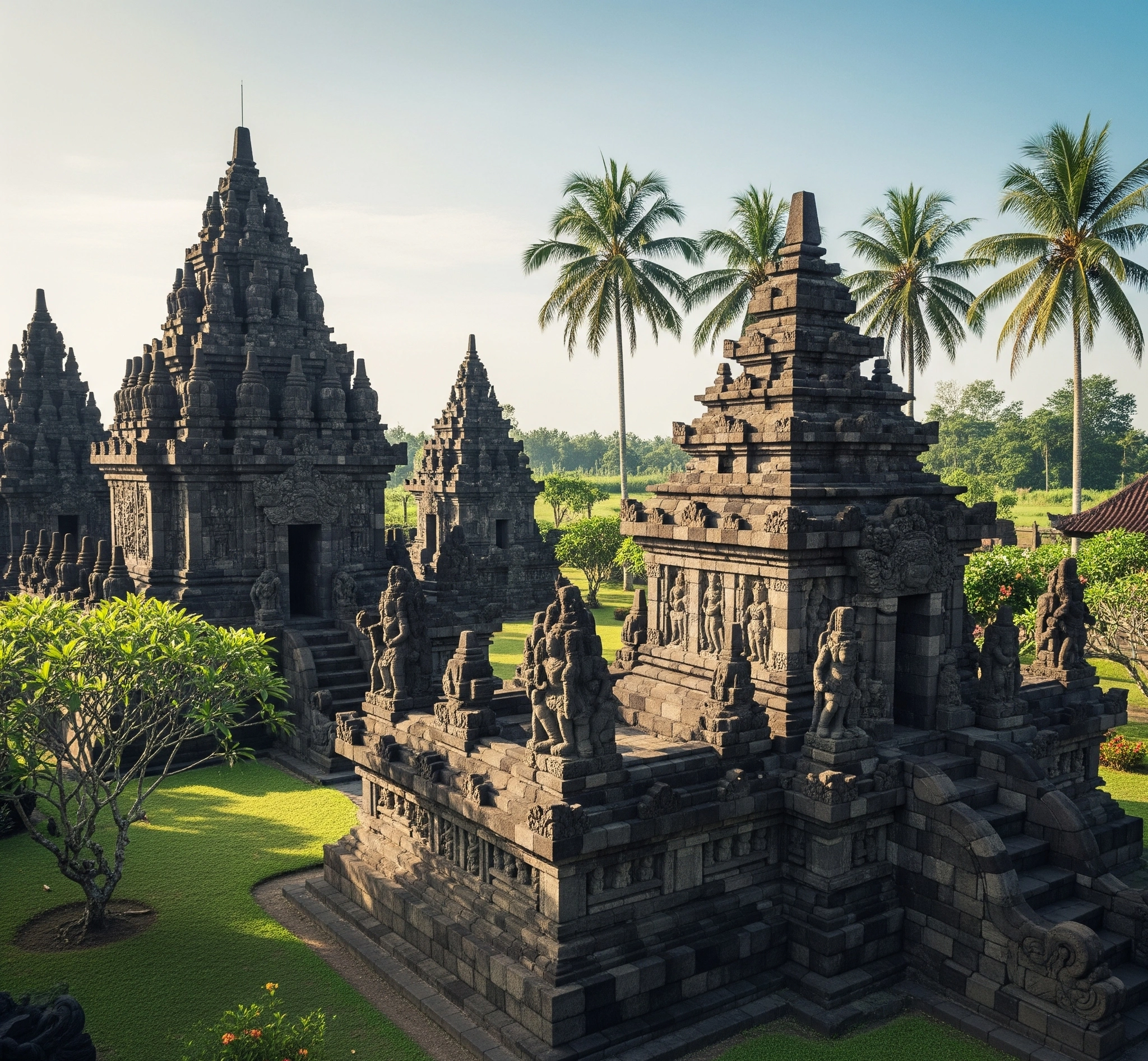A strategic deep dive into a Javanese masterpiece.

In the world of technology and corporate strategy, we are obsessed with mergers and acquisitions. We celebrate the bold vision, the massive valuations, and the promise of synergy. However, anyone who has lived through one knows the brutal reality. They understand the painful, often-failed process of integrating two different systems, two warring cultures, and two competing technology stacks. Consequently, the landscape becomes littered with redundant platforms, alienated teams, and a loss of the very value the merger was supposed to create.
Now, imagine executing this merger not with software and servers, but with stone, belief systems, and the fate of a kingdom. Imagine an “integration project” that takes decades. Furthermore, its final product is intended to stand for a thousand years as a public declaration of unity. This is the lens through which we must view Candi Plaosan.
This narrative, while beautiful, is a gross oversimplification. In reality, it’s the public-facing marketing material for one of the most brilliant political mergers in Southeast Asian history. As a digital architect accustomed to deconstructing complex systems, I see Plaosan not as a mere gift, but as a meticulously designed “enterprise architecture.”
A System of Duality and Fusion
At first glance, Candi Plaosan doesn’t present a single, unified structure. It is a complex, symmetrically divided into two main compounds. A road separates them into Plaosan Lor (North Plaosan) and Plaosan Kidul (South Plaosan). This very duality is the starting point of its architectural genius.
The true “code” of Plaosan, however, lies in its seamless fusion of Hindu and Buddhist iconographic elements. This deliberate blend would have been instantly readable to the 9th-century Javanese elite.
| Buddhist Elements | Hindu Elements |
|---|---|
| Stupas: The bell-shaped structures are the quintessential symbol of Buddhism. | Ratna Finials: The jewel-like pinnacles topping the temple roofs are a hallmark of Hindu temple architecture. |
| Bodhisattvas: The main temples house magnificent statues of Bodhisattvas. | Dvarapala Guardians: The robust, club-wielding figures at the entrances are typical Hindu temple guardians. |
| Vajrayana Mandalas: The overall layout reflects the cosmic diagrams of Tantric Buddhism. | Ornate Carvings: The style of the relief carvings shares a close aesthetic with the nearby Hindu Prambanan temple. |
AA Kingdom Divided
To grasp Plaosan’s strategic brilliance, we must first understand the political climate of 9th-century Central Java. Two immensely powerful and competing dynasties dominated the landscape:
- The Sailendra Dynasty: They were staunch patrons of Mahayana Buddhism. In fact, they were the architectural masterminds behind the colossal Borobudur.
- The Sanjaya Dynasty: As devotees of Shivaite Hinduism, they had a long history of rule in Java. They were responsible for early temples on the Dieng Plateau and, later, the epic Prambanan complex.
The turning point was the marriage of Pramodawardhani, the daughter of the Sailendra King Samaratungga, to Rakai Pikatan, a charismatic and ambitious prince of the Sanjaya line. This union was far more than a romance; in reality, it was a strategic alliance of unprecedented scale. Candi Plaosan thus became the physical manifestation of this treaty.
Inside the Twin Temples
Let’s run a “simulation” by stepping inside one of Plaosan Lor’s main temples. This is our case study. It reveals the temple’s core “user experience,” which designers created for its primary audience: the Javanese nobility.
Here is a breakdown of the “annotated” elements within this sacred space:
- The Central Statues: Each main temple once housed a magnificent bronze Buddha statue. Two standing stone Bodhisattvas flanked it, honoring the Queen’s faith.
- The Royal Devotees: Intricately carved panels depict male and female figures. These are likely stylized portraits of Rakai Pikatan and Pramodawardhani with their courts, all venerating the same Buddhist figures.
- The Integrated Design: A blend of Hindu and Buddhist motifs frames the windows and niches. This thoughtful integration creates a harmonious aesthetic.
A Manifesto of Syncretic Power
Here we arrive at the core insight. The temple is not merely a symbol of religious harmony born from love. Instead, it is a political manifesto in stone. Engineers designed it to legitimize a new, syncretic ruling ideology and consolidate the power of a merged dynasty.
- Legitimizing the Merger: By building Plaosan, Pikatan showed his Hindu constituency he had not abandoned his roots. At the same time, he assured the Buddhist faction that their faith was secure.
- A New Cultural Identity: The temple was a prototype for a new Javanese identity—one that was proudly both Hindu and Buddhist.
- A Message to Rivals: To any potential challengers, Plaosan was an unmistakable symbol of power. It demonstrated that one royal couple now controlled the combined resources of the two greatest dynasties.
A Political Architect’s Guide to Plaosan
So, how should a modern visitor, armed with this strategic insight, experience Plaosan? Forget a passive stroll. You should engage with it as a political architect and decipher its strategic intent.

- Identify the Core Systems (The Duality): First, consciously observe the separation between Plaosan Lor and Kidul.
- Analyze the Integration Points (The Fusion): Then, zoom in. Look for the specific points of fusion, like a Hindu *ratna* on a Buddhist-style temple.
- Deconstruct the User Persona (The Message): As you walk through the complex, ask yourself: “Who was this for?”
- Experience the Synthesis (The Harmony): Finally, step back and feel the result. The overwhelming sensation at Plaosan is one of serene, balanced harmony.
The Legacy of a Successful Integration
Candi Plaosan is far more than a beautiful ruin. It is a masterclass in strategy. This solution to a kingdom-level crisis was so successful that it paved the way for one of Java’s golden ages. Moreover, it teaches us that true synergy isn’t about one system conquering another. Instead, it’s about creating a new, integrated framework that honors the strengths of both. While later Javanese history saw different challenges, Plaosan remains the ultimate monument to unity. These challenges led to unique responses, like the esoteric defiance of temples such as Candi Sukuh.